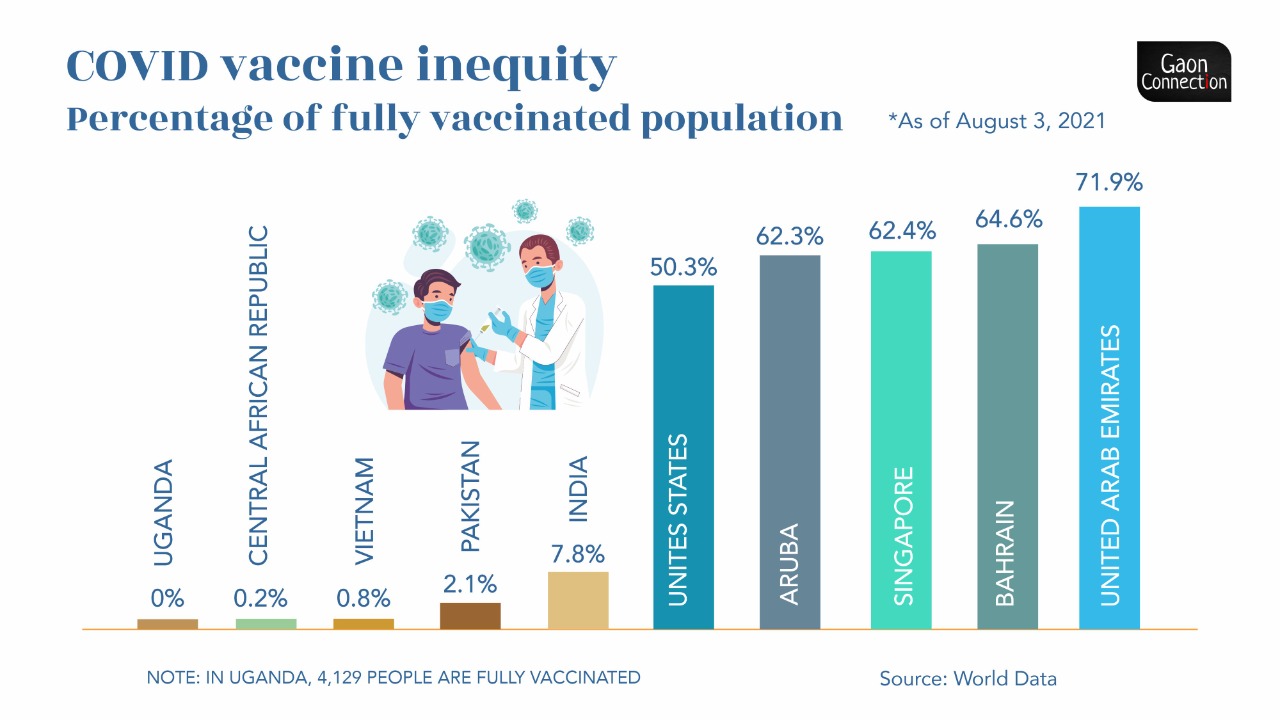As COVID19 vaccination coverage gap between rich and poor countries widens, WHO urges wealthiest nations to temporarily halt booster shots
The WHO has called for a moratorium on booster doses until the end of September to enable at least 10% of the population of every country worldwide to be vaccinated against the coronavirus. In Uganda and the Central African Republic, zero and 0.2% of the population is fully vaccinated respectively.


WHO Director General Tedros Adhanom Ghebreyesus. Photo: who.int
The World Health Organization (WHO) has urged the wealthiest countries across the globe to temporarily halt the COVID19 vaccine booster shots.
This was announced by WHO Director General Tedros Adhanom Ghebreyesus yesterday on August 4 in a media briefing.
Ghebreyesus pointed out that the world’s most vulnerable people are unprotected, and therefore, “WHO is calling for a moratorium on boosters until at least the end of September, to enable at least 10% of the population of every country to be vaccinated,” he said.
“While hundreds of millions of people are still waiting for their first dose, some rich countries are moving towards booster doses. These populations need vaccines urgently, especially health workers, older people and other vulnerable groups,” said the director general.
Also Read: Centre asks states to prioritise COVID19 vaccination for beggars, homeless destitutes
Booster dose for COVID19
At present, vaccination against COVID19 involves two doses of vaccine with a gap of a few weeks. For instance, in India, the dose interval between two doses of Covishield is 12-16 week and for Covaxin it is four weeks. A booster shot is meant to be given after a person is fully vaccinated for additional protection.
A booster dose is a means of strengthening one’s immune system against a particular pathogen. It may be exactly the same original vaccine, in which case its goal is to increase the magnitude of protection by producing more antibodies.

Rich countries have consumed 80% vaccine doses
The WHO highlighted that more than four billion vaccine doses have been administered globally so far. But of these, over 80 per cent have gone to high- and upper-middle income countries, even though they account for less than half of the world’s population.
Acknowledging the concern of all governments to protect their people from the Delta variant, Ghebreyesus said: “We cannot accept countries that have already used most of the global supply of vaccines using even more of it, while the world’s most vulnerable people remain unprotected.”
In late May this year, the WHO director general had called for global support for a ‘sprint to September’. This was done to enable every country to vaccinate at least 10 per cent of its population by the end of September.
“We’re now more than halfway to that target date, but we’re not on track,” he pointed out.
Wide disparities in vaccination
Among the high income countries, as of August 3, the United States has fully vaccinated 50.3 per cent of its population. So has the United Arab Emirates, which has fully vaccinated 71.9 per cent of its population. In Singapore, Bahrain, and Aruba, 62.4 per cent, 64.6 per cent, and 62.3 per cent of the population is fully vaccinated, respectively. All these are high income countries as per the World Bank data.
Among the low income countries, Uganda has managed to fully vaccinate only 4,129 people. Meanwhile, the Central African Republic has fully vaccinated only 0.2 per cent of its total population.

India that is categorised as one of the lower-middle income countries has vaccinated 7.8 per cent of its total population till August 3. In this group of countries, Vietnam and Pakistan have fully vaccinated 0.8 per cent and 2.1 per cent of their total population, respectively.
During May this year, high-income countries administered around 50 doses for every 100 people. Since then, that number has doubled, pointed out Ghebreyesus. Now, high-income countries have administered almost 100 doses for every 100 people.
Meanwhile, low-income countries have only been able to administer 1.5 doses for every 100 people ‘due to lack of supply’.
“We need an urgent reversal, from the majority of vaccines going to high-income countries, to the majority going to low-income countries,” he added.

